Wonderful Introduction:
The moon has phases, people have joys and sorrows, whether life has changes, the year has four seasons, after the long night, you can see dawn, suffer pain, you can have happiness, endure the cold winter, you don’t need to lie down, and after all the cold plums, you can look forward to the New Year.
Hello everyone, today XM Foreign Exchange will bring you "[XM Foreign Exchange Platform]: Peskov said that the Russian delegation is still waiting, and the short-term trend analysis of spot gold, silver, crude oil and foreign exchange on May 15th". Hope it will be helpful to you! The original content is as follows:
The three major futures indexes all fell, with Dow futures falling 0.44%, S&P 500 futures falling 0.65%, and Nasdaq futures falling 0.83%. European stocks generally fell, with the European Stoke 50 falling 0.5%, the German DAX30 falling 0.4%, the UK FTSE 100 falling 0.5%, and the French CAC40 falling 0.3%.
Russian President Press Secretary Peskov said this afternoon (May 15) local time that Russian President Putin set a task and clarified the negotiation position of the Russian delegation in Istanbul after discussing all relevant reports the night before. The Russian delegation arrived in Istanbul this morning and waited for the Ukrainian delegation from this morning, but the Ukrainian side has not arrived yet. Peskov said that Russia has not received any information about specific members of the Ukrainian delegation. He pointed out that Russia is willing to make every effort to ensure that the negotiations in Istanbul are effective, and the Russian delegation will also report to Putin as needed. In addition, Russian President Putin has no plans to visit Istanbul in the next few days, and has not made any preparations for the meeting between Putin and Trump in the near future, and the issue has never been discussed.
⑴ Polish central bank Governor Henrik Wornorowski said that the Polish central bank may start a new round of interest rate cuts in July or autumn in 2025, specificallyDepend on new inflation forecasts. ⑵ The Polish central bank lowered credit costs by 50 basis points in May, the first rate cut since October 2023, mainly due to slowing inflation, weaker wage growth and worsening economic conditions. ⑶Wororovsky said that although there are reasons to further reduce credit costs, more data and forecasts need to be waited for. He does not expect action in June, and a new round of interest rate cuts may be launched in July. ⑷ He also mentioned that if the July forecast supports further rate cuts, similar actions may occur in the fall. The rate cut is expected to be 25 basis points per rate cut. ⑸Wororovsky stressed that although further interest rate cuts may be possible, major interest rates are expected to remain at 4.00% by the end of the year. The main interest rate is currently 5.25%. ⑹ He noted that inflation threats remain high, especially given the loose fiscal policy and the increase in budget deficits, and the possibility of lifting restrictions on rising energy prices at the end of the year. ⑺Wororovsky said that the Monetary Policy Committee will be committed to keeping inflation within the target range set by the central bank (1.5%-3.5%).
⑴ Before a series of data will be released later on Thursday, U.S. Treasury prices rose slightly, with yields falling by 1-2 basis points for each term. ⑵ The U.S. data to be released on Thursday include the producer price index (PPI), retail sales, the number of weekly first-time unemployment claims and industrial output value. ⑶Neuberger Berman's Erik Knutzen pointed out in the report that the market is currently focusing on economic fundamentals rather than tariff uncertainty, and U.S. Treasury yields have fallen from the high after President Trump announced reciprocal tariff measures in early April. ⑷ According to data from the London Stock Exchange, the yield on the 2-year Treasury bond was 4.029%, the yield on the 10-year Treasury bond was 4.506%, and the yield on the 30-year Treasury bond was 4.946%.
⑴Asian low-sulfur fuel (VLSFO) market maintained its recent strong momentum on Thursday, while onshore inventory in Singapore further fell to its lowest level in two months. VLSFO was backed by strong bids from early June loading dates, with the cash spread remaining above $10 per ton. ⑵ However, some trade sources said that it is still uncertain whether the strong market momentum can continue due to high supply from different sources. Asia will receive more arbitrage cargo from the West this month, especially from Brazil and Mexico, according to estimates from the London Stock Exchange Group (LSEG) oil research unit this week. ⑶Dangote, Nigeria, provided residual fuel for loading in early June through a bid that ended on Tuesday. The shipment includes 120,000 tons of low-sulfur straight-distillation materials and slurry. ⑷ At the same time, the cash spread of high-sulfur fuel (HSFO) was still in a discount state on Thursday, but the crack spread further rose due to weakening crude oil futures. June 380-cstHSFO cracking spread closed at crude oil reportThe price is above $3 per barrel. ⑸ Singapore's residual fuel inventories fell to 19.39 million barrels (about 3.05 million tons) in the week ending May 14, a two-month low. ⑹Crude oil prices fell on Thursday as U.S.-Iranian nuclear deals could be reached, while U.S. crude oil inventories unexpectedly increased, heightening investors' concerns about oversupply. ⑺Saudi Aramco said it has signed 34 preliminary agreements with major U.S. companies with a potential value of up to $90 billion. ⑻Japan Petroleum is cutting its decarbonization plan, including hydrogen and ammonia projects, as the world is moving towards a more stable and cost-effective fossil fuel.
⑴ As investors remain cautious before the release of key U.S. data, the cost of credit default swaps (CDS) is rising. The upcoming U.S. producer price index (PPI), retail sales and weekly unemployment benefits applicants will be released at 20:30 Beijing time. ⑵ Market optimism caused by the Sino-US trade agreement has subsided at the beginning of this week. Chris Beauchamp, chief market analyst at IG, pointed out that Thursday's PPI, initial jobless claims data and Powell's speech are strong reasons for the cooling of market risk appetite. ⑶ According to data from S&P GlobalMarketIntelligence, the iTraxxEurope Crossover index, which tracks euro junk bond CDS, rose 6 basis points to 305 basis points.
⑴ The US Producer Price Index (PPI) in April 2025 is expected to rise by 0.2% month-on-month, reversing the situation of a 0.4% decline in March. The decline in March is the first month-on-month decline in PPI since October 2023, with investors closely following early signs of tariff-related inflationary pressure. ⑵ After excluding volatile food and energy prices, the core PPI is expected to rise by 0.3% in April, following a 0.1% decline in the previous month. ⑶ From an annual perspective, overall producer inflation in April is expected to slow to 2.5%, the seven-month lowest level, down from 2.7% in March. Core producer inflation is expected to drop to 3.1%, the lowest since August 2024, down from 3.3% before.
⑴ The growth rate of the eurozone economy in early 2025 is lower than preliminary estimates. Although U.S. companies rushed to buy imported goods before trade tariffs, driving factory output to increase, the eurozone's GDP grew only 0.3% in the first quarter, down from a previously estimated 0.4%. ⑵Eurostat said that the contraction of Slovenia's economy was part of the reason for the overall slowdown in the euro zone, and the country's data was not included in the estimate. ⑶ Industrial production continued to grow in the quarter, driving overall economic performance. Industrial output rose by 2.6% month-on-month in March, far higher than the Wall Street JournalSurvey economists expected 1.1%, and the third consecutive month of growth. ⑷ The strong growth in industrial output in March was mainly driven by Germany and Ireland. As a European industrial power, Germany's output grew by more than 3%; Ireland's output grew by about 15% compared with the previous month. The two economies are the most affected by trade tariffs in the euro zone, and the surge in factory output shows that U.S. importers stocked up in large quantities before tariffs were implemented in early April. ⑸ The Irish economy grew by 3.2% in the first quarter of 2025, surpassing the major euro zone economies, mainly due to the increase in production in the country to stockpile inventory in response to upcoming tariffs. ⑹ However, as U.S. warehouses gradually fill up and tariffs may curb U.S. demand for European goods, this growth in production may be difficult to sustain. Although Trump suspended the 20% tariff on all EU imported goods, the 10% basic tariff remains, while the 25% tariff on automobiles and some metals continues to be implemented. ⑺ING economist Bert Colijn said the eurozone manufacturing industry experienced a brief boom in the first quarter, but that boom could fade quickly as tariffs were implemented. Andrew Kenningham of CapitalEconomics believes that if higher tariff threats persist, companies may continue to stock up in advance.
⑴ The Bank of England's policy resolution in May is more hawkish than market expectations, resulting in a sharp decline in market expectations for continuous interest rate cuts. The probability of interest rate cuts in June fell from 50% before the rate cut to 4%, and market expectations are more likely to turn to another interest rate cut in the third quarter. ⑵ The current market bet on August easing is about 16 basis points (64%), indicating that the market's hawkish expectations for the Bank of England may have reached its peak. However, the release of two future inflation reports may affect market expectations. If inflation data unexpectedly declines, market expectations may turn to dovish again. ⑶ Although Bank of England Governor Bailey is open to a rate cut in June, the threshold for interest rate cuts is extremely high, and the market expects a rate cut to be reflected in resolutions in August and beyond. ⑷ For the pound, the Bank of England's hawkish stance will have limited impact in the short term. The market focus shifts to the upcoming UK-EU summit, where British Prime Minister Stamer hopes to promote closer UK-EU relations, a progress that may support the pound.
Euro/USD: As of 20:24 Beijing time, the euro/USD rose, and is now at 1.1193, an increase of 0.16%. Before the New York Stock Exchange, the price of (Euro/USD) rose in recent intraday trading and began to show positive signals of (RSI). After reaching the oversold level, it tried to unload some oversold conditions and traded in the bear market correction channel in the short term. As the trading was below EMA50, it continued to bear negative pressure.
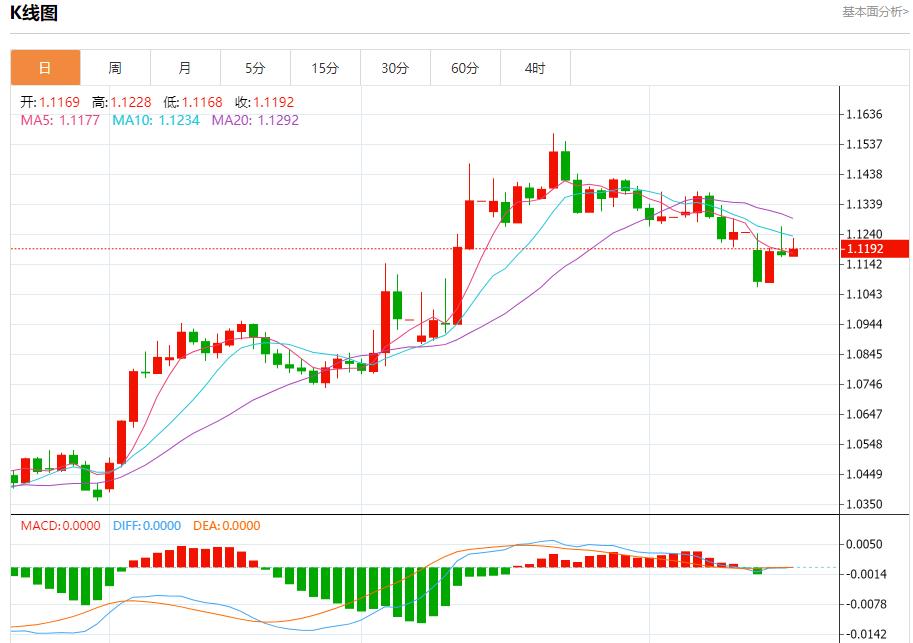
GBP/USD: As of 20:24 Beijing time, GBP/USD rose and is now at 1.3285, up 0.24%. Before the New York market, the (GBPUSD) price fell in recent intraday trading, exceeding its EMA50 support and facing negative pressure, especially with the emergence of negative signals on (RSI), despite reaching oversold levels, and is ready to break the key support of 1.3260 under the leadership of the short-term bear market correction trend.
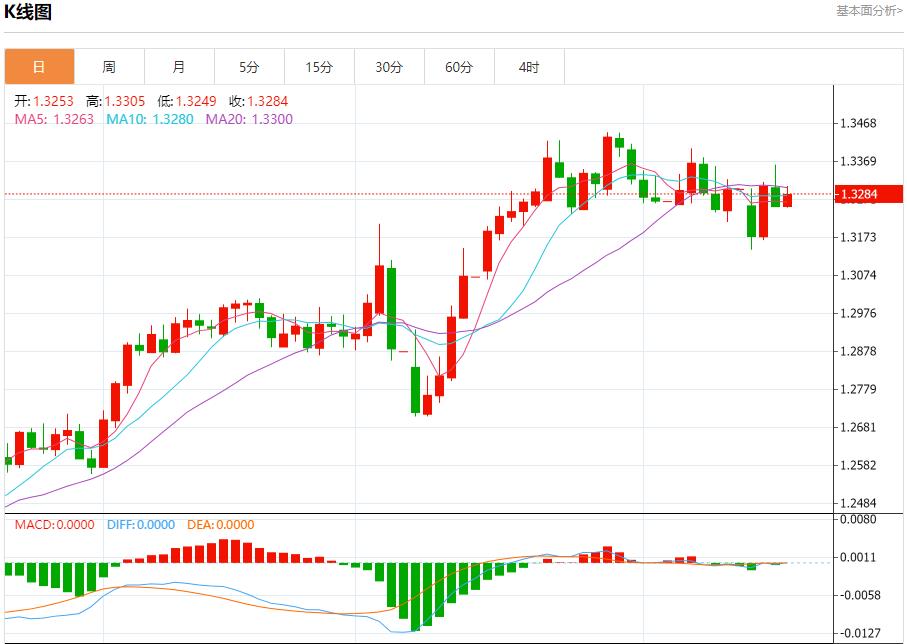
Spot Gold: As of 20:24 Beijing time, spot gold rose, now at 3184.59, up 0.23%. Before the New York market, the (gold) price rose in recent intraday trading, and after exceeding our morning-expected support of $3,150, it suddenly rebounded upward, trying to unload some oversold conditions on (RSI), from which positive signals appeared, bear market correction trends dominated on a short-term basis and traded along a clear bear market slash.
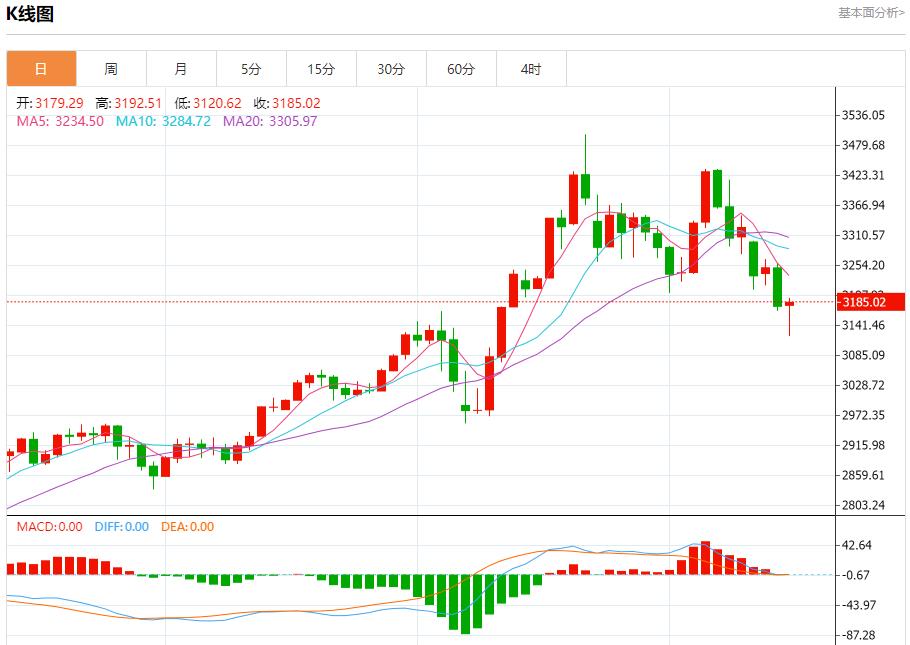
Spot silver: As of 20:24 Beijing time, spot silver fell and is now at 32.136, a drop of 0.18%. Before the New York Stock Exchange, after the (silver) price exceeded the key support of $31.90, witnessed mixed trading at the intraday level, rebounding higher, trying to get rid of its exaggerated oversold conditions on (RSI), especially with the emergence of positive overlap signals and attempting to recover some of the previous losses and continue to bear negative pressure from trading below the EMA50.
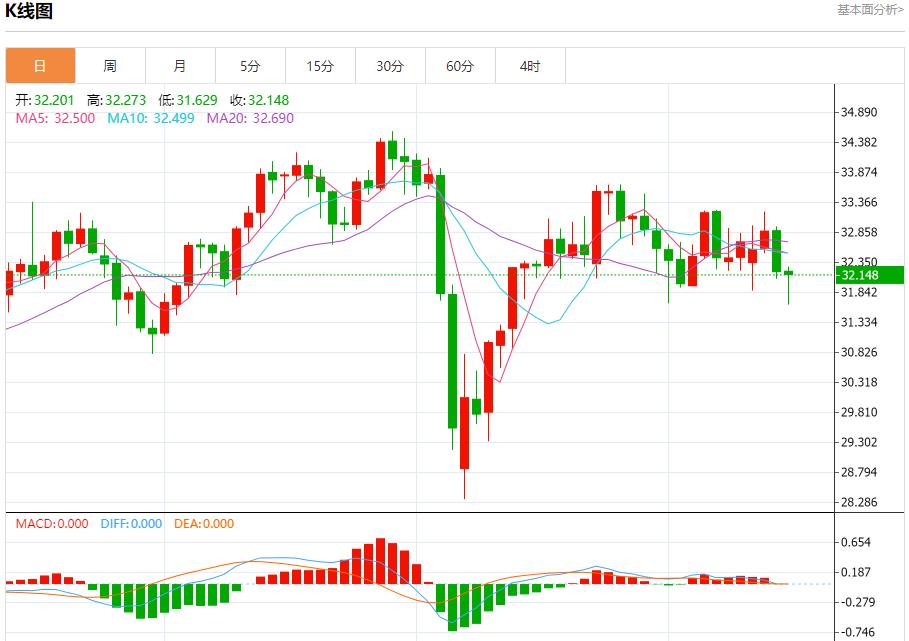
Crude Oil Market: As of 20:24 Beijing time, U.S. oil fell and is now at 61.100, a drop of 3.25%. Before the New York Stock Exchange, the price of (crude oil) fell in recent intraday trading, breaking the bullish correction bias line on the short-term basis and increasing negative pressure, especially with the emergence of negative (RSI) signals, despite reaching oversold levels, relying on its EMA50 support, providing positive momentum that may support a temporary bullish rebound to recover some of the early losses.
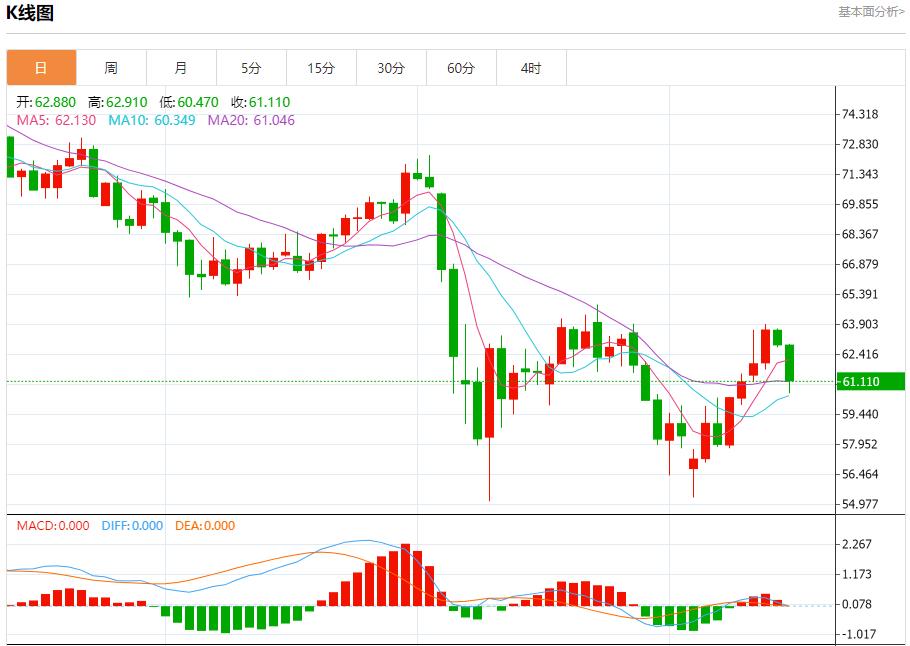
Analysts at the Deutsche Bank Research Center said in a report that the Federal Reserve may keep the policy interest rate unchanged before the December rate cut and then further relax the policy next year. "Our basic assumption remains, the followingOne rate cut was in December, followed by two more rate cuts in the first quarter of 2026, at 25 basis points each time. "Analysts said that trade easing reduces the risk of further deterioration of the US labor market, but other tariff measures may keep inflation at an unsettling high level.
The above content is about "[XM Forex Platform]: Peskov said that the Russian delegation is still waiting. The short-term trend analysis of spot gold, silver, crude oil, and foreign exchange on May 15" was carefully compiled and edited by the editor of XM Forex. I hope it will be helpful to your transaction! Thanks for your support!
Share, just as simple as a gust of wind can bring refreshment, just as pure as a flower can bring fragrance. The dusty heart is gradually opening up, I understand sharing, sharing is actually so simple.